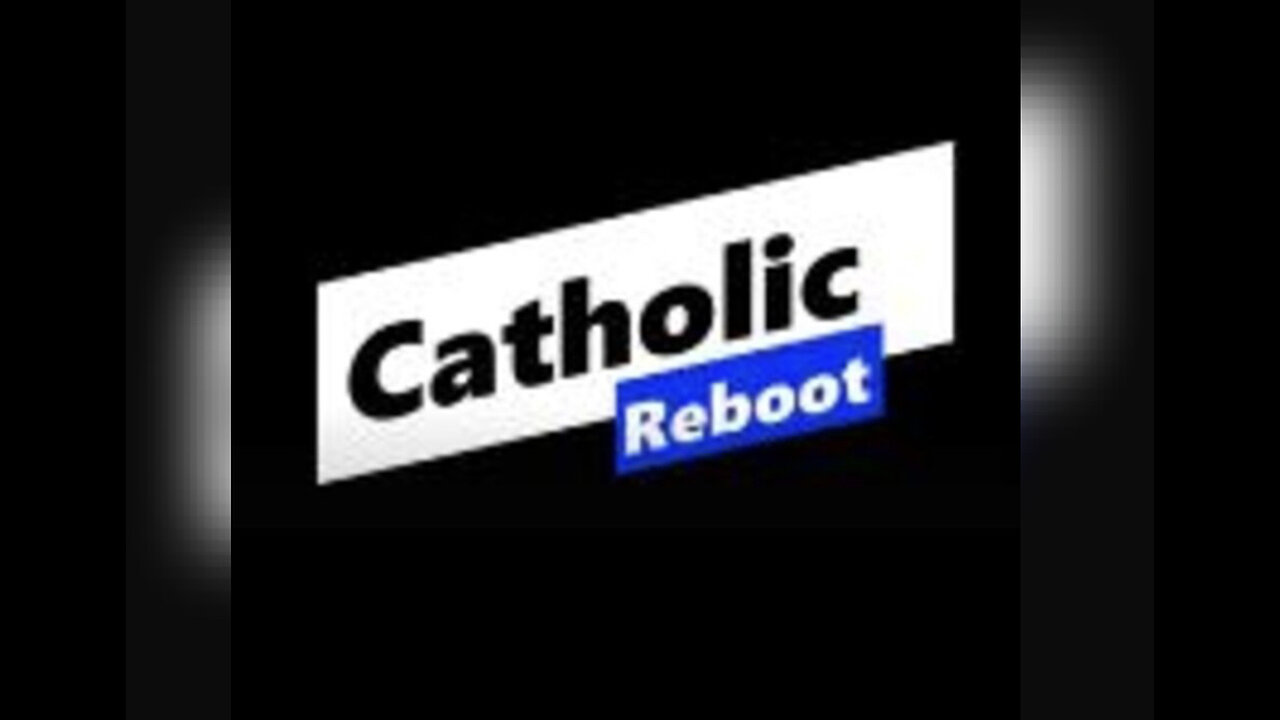Premium Only Content

Episode 1806: Ashes to Ashes Dust to Dust - Literally?
I have spoken about the new culture of “Celebration of Life” that has seemed to take over our Catholic Culture and to the point were Catholics are moving away from the Mass of the Dead and moving to a form of humanism in the celebration of life. The question was is that truly catholic and I summarized no its actually a form of paganism or modernism that has in effected the Catholic Faithful. I also spoke about the wedding masses of the young Catholics have been replaced with nonsacramental wedding masses and into the barns and the fields and even at times friends getting an online minister license and using them to officiate the wedding.
Well there is also another matter that has affected our faith and that is the cremation of the dead. Now I can hear people say, “Oh please Wal is there anything positive about our current culture?” Actually not that I can see and even more, so this matter has become so much the norm that the exception is long gone.
See V2 always used the exception to become the norm. Communion in the hand was an exception that started in the late 70’s with “you do not have to” and then priests made it the norm by making people feel awkward for kneeing to receive the eucharist by the tongue.
You see that the catholic church once it adopted “Liberation Theology” in the 1960’s it was a blending of communism with Catholicism and out went not only thomonistic theological teaching but all forms of tradition.
Well let me ask you, what was the Catholic Churches teaching on burying the dead verses cremation of the dead. Quite simple, before 1963 (preV2) you could not cremate the dead?
So let me walk you through this.
The Catholic Church's official stance on cremation before 1963 was one of discouragement.
Here's a breakdown of the historical context:
Pre-1963:
Cremation was traditionally associated with pagan practices and seen as disrespectful to the body, which Catholics believe will be resurrected at the end of time.
The Church preferred traditional burial as a way to show reverence for the deceased and to symbolically connect them with the earth, representing their return to dust.
However, cremation was not explicitly banned, and exceptions were made in cases of necessity or practicality, such as during plagues or military conflicts.
Shifting Views (1963 and beyond):
In 1963, the Second Vatican Council issued the document "Piam et Gratitudinem" ("Piously and Thankfully"), which significantly revised the Church's stance on cremation.
The document recognized the changing cultural context and acknowledged that cremation could be a legitimate choice for Catholics, as long as it was not motivated by anti-religious sentiments or a denial of the resurrection of the body.
Since then, the Church has further clarified its position, stating that cremation is now considered a morally acceptable option, with no inherent disrespect to the deceased or their faith.
So let’s read this document.
Piam et Gratitudinem on Cremation: Specific Points
1. Acknowledgement of Changing Practices:
The document recognizes the increasing prevalence of cremation in contemporary society, attributing it to "reasons of hygiene, economics, or public cremation facilities."
2. Legitimization of Cremation for Catholics:
It explicitly removes the stigma associated with cremation, stating that "the Church no longer holds the practice of cremation in suspicion as being opposed to the Christian religion."
This signifies a significant shift from the earlier discouragement of the practice.
3. Emphasis on Respect and Catholic Belief:
Piam et Gratitudinem stresses that the choice of cremation should not be motivated by "a denial of the Christian dogma of the resurrection of the bodies" or "a rejection of the prayers for the deceased."
It underscores the importance of maintaining Catholic beliefs and practices regardless of the chosen burial method.
4. Focus on Interior Motive:
The document ultimately emphasizes the internal motivation behind the choice, stating that "what matters is the Christian attitude of the soul which remains united with God in faith and charity."
This suggests that as long as the decision stems from respect for the deceased and aligns with Catholic faith, cremation is acceptable.
5. Encouragement of Traditional Burial:
While acknowledging the legitimacy of cremation, Piam et Gratitudinem still encourages the traditional practice of burial.
It highlights the symbolic significance of burying the body in the earth, connecting it with the concept of resurrection.
Overall, Piam et Gratitudinem marks a turning point in the Catholic Church's stance on cremation. It moves away from discouragement and towards acceptance, while emphasizing the importance of maintaining respect for the deceased and adhering to Catholic beliefs.
The Traditional Catholic Church's association of cremation with pagan practices and disrespect for the body stemmed from a confluence of theological, historical, and symbolic factors:
Theological Basis:
Resurrection of the Body: Catholics believe in the bodily resurrection at the end of time, where every person's physical body will be reunited with their soul. Cremation was seen as hindering this process, potentially destroying the material needed for the resurrected body.
Dignity of the Human Body: Catholicism emphasizes the human body as created in the image and likeness of God. Cremation was viewed as a desecration of this sacred vessel, denying it the proper reverence due to God's creation.
Historical Context:
Association with Pagan Practices: Ancient cultures like Greeks and Romans practiced cremation extensively, often alongside beliefs in the separation of body and soul and the finality of death. This association led to a perception of cremation as inherently incompatible with Christian beliefs in resurrection and the continued significance of the physical body.
Early Christian Burial Practices: Christians in the early Roman Empire often faced persecution and buried their dead in secret to avoid desecration. Burial in underground cemeteries became a distinctive practice, further solidifying the association of burial with Christian faith and cremation with paganism.
Symbolic Dimensions:
Burial and Return to Earth: The act of burial symbolized returning the body to the earth, from which it was created. This mirrored the biblical narrative of Adam returning to dust. Cremation, by contrast, seemed to disrupt this symbolic cycle and disrespect the natural process of decay and renewal.
Integrity and Completeness: Burial preserved the body in its entirety, reflecting the belief in the resurrection of the whole person. Cremation, which fragmented and reduced the body to ashes, was seen as a violation of this completeness and a potential obstacle to future transformation.
So lets go to the pre-1963 change and address when it was an exception?
Public health emergencies: During epidemics or plagues, cremation could be permitted to prevent the spread of disease.
Military conflicts: Cremation of soldiers killed in wartime was often accepted due to practical limitations on traditional burial.
Lack of available burial space: In some regions with limited land, cremation might be allowed as a practical solution.
Burial of Cremated Ashes in Exception Cases:
Respectful Placement: Even in exceptional cases where cremation was permitted, the Church still emphasized treating the ashes with respect and dignity.
Church Grounds: Burial of ashes within consecrated cemetery grounds remained preferred, symbolizing connection to the Christian community and prayers for the deceased.
Urns or Niches: Ashes were typically placed in urns or niches within the cemetery, ensuring permanent and protected placement.
Traditional Rites: While full burial rituals were encouraged, certain adaptations might be made for cremated remains, still incorporating prayers and blessings for the deceased.
So some people will say but what about Ashes to ashes as listed in scripture. As always the modern Catholic Church like the or Protestant counterparts mistranslated scripture to suite their own purposes and so let’s go through that.
Ecclesiastes 3:20: "All go unto one place: all were made of dust, and all shall return to dust again."
Job 34:15: "All flesh shall perish together, and man shall return to dust."
Psalm 103:14: "For the knoweth whereof we are made: he hath remembered that we are dust."
Genesis 3:19: "For dust thou art, and unto dust thou shalt return."
focusing on its implications for humanity's nature, the consequences of sin, and the hope for redemption. Here are some key aspects of their interpretations:
Mortality and Physical Death:
Primary Interpretation: The verse is primarily understood as affirming humanity's inherent mortality. Dust symbolizes our physical nature and the inevitability of death. This reflects the punishment imposed on Adam after the Fall, introducing death into human existence.
Connection to Nature: The return to dust emphasizes our connection to the created order. We come from the earth and will eventually return to it, highlighting the finitude of our earthly life.
Consequences of Sin:
Broken Relationship with God: The statement also signifies the disruption of the original harmony between God and creation caused by sin. Death, previously absent, becomes a consequence of disobedience and separation from God's grace.
Loss of Immortality: Some theologians interpret the verse as indicating the loss of potential immortality granted to Adam in the Garden of Eden. The "dust to dust" phrase represents the forfeiture of a longer, blessed life in God's presence.
Hope for Redemption:
Not the Final Word: While stressing death's reality, traditional theologians highlight that this verse isn't the final word on humanity's destiny. Hope for redemption is found in God's promise of a Savior and the ultimate victory over death through Christ's resurrection.
Resurrection of the Body: The emphasis on physical dust also serves as a foreshadowing of the future resurrection of the body. Though our bodies return to the earth, they are not ultimately destroyed, and there is the promise of a transformed physical existence for those in Christ.
Now let’s point to the Corporal works of Mercy
Corporal Mercy: Burying the dead is traditionally considered a corporal work of mercy. This stems from the belief that caring for the deceased's physical remains is an act of kindness and respect for their human dignity.
Corporal Mercy: Burying the Dead
Reverence for Life: The Catholic faith emphasizes the sanctity of all human life, even after death. Burying the dead reflects this reverence by treating the body with care and providing a proper resting place.
Hope and Faith: The act of burial also expresses hope and faith in the resurrection of the dead. Catholics believe that the body, though it may decompose, will one day be reunited with the soul in a new and transformed state.
Charity and Compassion: Burying the dead often involves supporting and consoling the bereaved. This act of charity and compassion demonstrates care for the emotional and spiritual well-being of those who have lost loved ones.
Justice: Providing a decent burial for the deceased, regardless of their background or circumstances, aligns with the Catholic concept of social justice. It ensures that everyone is treated with dignity and respect in death.
So please my fellow Catholic’s stop burning the dead and go out and educate your fellow Catholics and convert them to Extreme Unction prior to death, a Mass for the Dead after death (Requiem Mass) and burying the body in sacred ground (Catholic Cemetery). Good day!
-
 LIVE
LIVE
TimcastIRL
19 minutes agoCorporate Press Refuses To Mention Minneapolis Shooter Was Trans | Timcast IRL
16,541 watching -
 LIVE
LIVE
The Charlie Kirk Show
21 minutes agoTHOUGHTCRIME Ep. 96 — The Great Flag Burning Debate
818 watching -
 LIVE
LIVE
Glenn Greenwald
2 hours agoMinnesota Shooting Exploited to Impose AI Mass Surveillance; Taylor Lorenz on Dark Money Group Paying Dem Influencers, and the Online Safety Act | SYSTEM UPDATE #507
9,242 watching -
 LIVE
LIVE
SpartakusLIVE
3 hours agoRUMBLE PREMIUM - AD FREE | In the MAYHEM of the DEMONS and the TATERS, One HERO Will RISE to the TOP
201 watching -
 1:05:09
1:05:09
Donald Trump Jr.
5 hours agoMare Liberum: The Next Chapter in Protecting Our Sovereignty, Interview with Erik Bethel | Triggered Ep.271
86.4K57 -
 DVR
DVR
StoneMountain64
6 hours ago#1 WARZONE TACTICIAN + New Battlefield Trailer
53.8K7 -
 LIVE
LIVE
LFA TV
13 hours agoLFA TV ALL DAY STREAM - THURSDAY 8/28/25
858 watching -
 LIVE
LIVE
LIVE WITH CHRIS'WORLD
4 hours agoLIVE WITH CHRIS’WORLD - YOU DON’T HATE THE MEDIA ENOUGH!
191 watching -
 LIVE
LIVE
SavageJayGatsby
23 hours agoFirst Rumble Exclusive Stream?! | Let's Play: Prey | $300 Weekly Goal for Spicy Bite Saturday
376 watching -
 LIVE
LIVE
GritsGG
11 hours agoWin Streaking! Most Wins 3485+ 🧠
136 watching